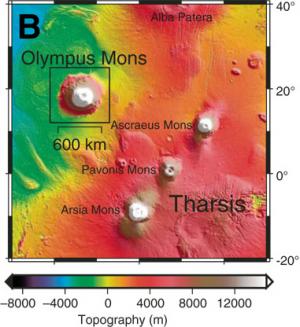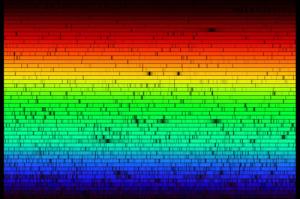
© Rice University/NASAUsing a computer modeling system to figure out how Olympus Mons came to be, McGovern and Morgan reached the surprising conclusion that pockets of ancient water may still be trapped under the mountain.
The Martian volcano Olympus Mons is about three times the height of Mount Everest, but it's the small details that Rice University professors Patrick McGovern and Julia Morgan are looking at in thinking about whether the Red Planet ever had - or still supports - life.
Using a computer modeling system to figure out how Olympus Mons came to be, McGovern and Morgan reached the surprising conclusion that pockets of ancient water may still be trapped under the mountain.
Their research is published in February's issue of the journal
Geology.
The scientists explained that their finding is more implication than revelation. "What we were analyzing was the structure of Olympus Mons, why it's shaped the way it is," said McGovern, an adjunct assistant professor of Earth science and staff scientist at the NASA-affiliated Lunar and Planetary Institute. "What we found has implications for life - but implications are what go at the end of a paper."


